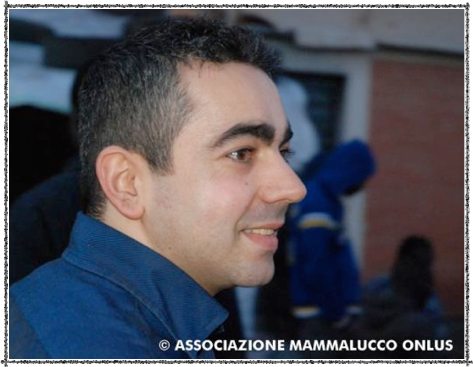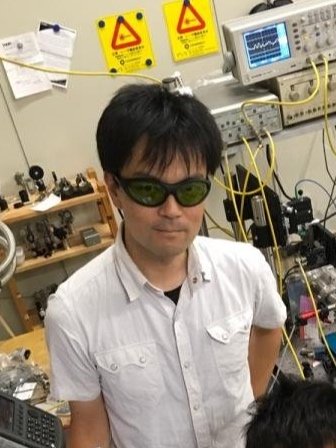
Upcoming Talks
Please Note: Times listed without a location to denote time zone can be assumed to be in UTC.

Julie Forman-Kay
NMR approaches for intrinsically disordered proteins
NMR is a powerful tool for obtaining site-specific information about dynamic systems, including intrinsically disordered proteins and protein regions (IDPs/IDRs) which do not adopt unique, stable folded structures. While computational approaches are increasingly powerful for stable proteins and protein domains, there is a huge need for experimental information about IDPs, IDRs and the highly dynamic complexes that they often make with other disordered proteins, folded domains and other biomolecules. The lecture will highlight examples of NMR studies of IDPs and their dynamic complexes, including condensed state models of those found in biomolecular condensates.
8:00 AM California or 11:00 AM Boston or 5:00 PM Paris or 9:30 PM Delhi

Nesreen Elathram
Title To Be Announced
Abstract to be announced.
8:00 AM California or 11:00 AM Boston or 5:00 PM Paris or 9:30 PM Delhi

Tatyana Polenova
Title To Be Announced
Abstract to be announced.
8:00 AM California or 11:00 AM Boston or 5:00 PM Paris or 9:30 PM Delhi

Tom Wenckebach
Title To Be Announced
Abstract to be announced.
8:00 AM California or 11:00 AM Boston or 5:00 PM Paris or 8:30 PM Delhi

Sheetal Jain
Understanding Dynamic Nuclear Polarization: Insights from Average Hamiltonian Theory
Average Hamiltonian Theory (AHT) effectively explains the mechanisms,
efficiencies, and optimal conditions for solid-state NMR pulse sequences.
In Dynamic Nuclear Polarization (DNP), AHT describes how electron-
nuclear spin couplings drive polarization transfer under microwave
irradiation. By simplifying spin dynamics, AHT offers insights into
polarization mechanisms like the solid effect, cross effect, and pulsed DNP,
helping predict conditions to maximize nuclear spin polarization and
enhance NMR signal sensitivity.
8:00 AM California or 11:00 AM Boston or 5:00 PM Paris or 8:30 PM Delhi

Adam Altenhof
Low-Field Magnetic Resonance for Detection and Other Applications
Low-field NMR can offer better resolution than at high-field. Extremely homogeneous B0 fields
and low susceptibility broadening results in signal lifetimes around 1 – 10’s of seconds. Earth’s
field NMR and nuclear quadrupole resonance (NQR) both offer low cost, high portability, and
applications for detection of illicit materials, including fentanyl.
8:00 AM California or 11:00 AM Boston or 5:00 PM Paris or 8:30 PM Delhi

Fred Mentink-Vigier
Electron Paramagnetic Resonance: Advancing Magic Angle Spinning Dynamic Nuclear Polarization
Electron Paramagnetic Resonance (EPR) is crucial for analyzing paramagnetic species used in Dynamic Nuclear Polarization (DNP). This overview covers EPR fundamentals and its application to studying biradicals, which are key for high-field Magic Angle Spinning (MAS) DNP.
8:00 AM California or 11:00 AM Boston or 5:00 PM Paris or 8:30 PM Delhi

Meghan Halse
Parahydrogen-enhanced benchtop NMR spectroscopy
Benchtop NMR spectrometers, due to their portability and affordability, have the potential to transform the accessibility of NMR spectroscopy. Hyperpolarisation can break the link between NMR sensitivity and magnetic field strength, overcoming a key limitation of low-field benchtop NMR spectrometers. This presentation will explain the fundamentals of parahydrogen hyperpolarisation and explore recent developments in its use with benchtop NMR detection, including progress towards analytical applications.
8:00 AM California or 11:00 AM Boston or 5:00 PM Paris or 8:30 PM Delhi

Jean-Nicolas Dumez
Gradient pulses on moving spins: flow NMR methods for reaction monitoring
Flow NMR is a powerful approach to monitor chemical reactions, with applications in fields such as catalysis and polymer science. The sample flow makes it necessary to revisit some of the core concepts of NMR pulse sequences. This presentation will describe recent developments of fast multidimensional NMR methods that are applicable in continuous flow, and the underlying spin dynamics concepts.
8:00 AM California or 11:00 AM Boston or 5:00 PM Paris or 8:30 PM Delhi

Tamar Wolf
Dipolar Order Saves the Day: Sensitivity Enhancement under Static and MAS Conditions
Sensitivity enhancement of unreceptive nuclei is a major goal of solid-state NMR. This tutorial will focus on methods to enhance the sensitivity of dilute and unreceptive nuclei under static and magic-angle-spinning (MAS) conditions using dipolar order, the theoretical framework to understand them, and practical considerations when performing them.
8:00 AM California or 11:00 AM Boston or 5:00 PM Paris or 8:30 PM Delhi

Giuseppe Pileio
Long-loved nuclear singlet spin order and its applications
Nuclear singlet spin order is the population difference between the singlet and triplet states in a system of two coupled spin-1/2 nuclei. This form of order is long-lived, silent and accessible on demand. For almost two decades, my research activities were focused at exploiting these three main properties of nuclear spin order to develop new applications in NMR and MRI.
In this talk, I will introduce the concept and the main features of singlet order as well as the tools developed for its manipulations.
I will then show how we are using this form of order to enhance several NMR and MRI techniques for the long-term storage of hyperpolarisation, to obtain a new form of contrast in MRI, for the measurements of slow diffusion and flow, or for the determination of structural features of porous media such as tortuosity and structural anisotropy through singlet-assisted diffusion NMR.
8:00 AM California or 11:00 AM Boston or 5:00 PM Paris or 8:30 PM Delhi

Leif Schröder
Hyperpolarized Xenon NMR for Exploring Molecular Host Cavities and Advancing MR Imaging
The large chemical shift range of Xe-129 NMR makes this nucleus a valuable probe in spectroscopy and biomedical imaging. Hyperpolarized Xe can be used also as dissolved noble gas to provide 10’000-fold improved sensitivity over extended periods of time. In combination with saturation transfer techniques, reversibly bound hyperpolarized xenon gives insights into exchange kinetics of various host-guest complexes. This talk will give an overview of studies investigating the affinity of dissolved Xe for various hosts like biogenic hollow protein structures with attoliter volumes or synthetic hosts for trapping individual Xe atoms. Both strategies find applications in the spectroscopic investigation of exchange kinetics of host-guest systems and in the design of ultra-sensitive magnetic resonance imaging agents.
9:00 AM California or 12:00 PM Boston or 5:00 PM Paris or 9:30 PM Delhi

Robert Powers
The Application of NMR Metabolomics to Drug Discovery and Disease Diagnosis
NMR-based metabolomics has benefited a variety of fields including drug discovery and disease diagnosis. Metabolomics is technically very challenging and requires expertise in a diversity of scientific areas. In this regard, this tutorial will discuss best practices for sample preparation and handling, data collection and analysis, and statistical modeling and interpretation to achieve biologically and clinically significant results.
8:00 AM California or 11:00 AM Boston or 4:00 PM Paris or 8:30 PM Delhi

Sean Holmes
Title to Be Announced
Abstract to be announced.
8:00 AM California or 11:00 AM Boston or 5:00 PM Paris or 9:30 PM Delhi

Gareth Morris
Why Is DOSY So Different From COSY?
Peaks in COSY, NOESY, ROESY and HSQC 2D spectra either appear where they should, or not at all. In DOSY spectra, it is all too common to see peaks at incorrect positions in the diffusion domain. This tutorial will explore why this happens, what we can do about it, and how to avoid being misled by DOSY spectra.
8:00 AM California or 11:00 AM Boston or 5:00 PM Paris or 9:30 PM Delhi

Ann-Christin Pöppler
Challenges in the characterization of polymeric materials for drug delivery and tissue engineering applications
NMR spectroscopy is sensitive to subtle changes in local environment and dynamics over multiple length and time scales making it a versatile technique to study polymeric materials and incorporated molecules. Challenges, which will be discussed in this presentation arise from the size (distribution), rigidity and intrinsic disorder of the samples.
8:00 AM California or 11:00 AM Boston or 5:00 PM Paris or 9:30 PM Delhi

Nergiz Sahin Solmaz
Single Chip Dynamic Nuclear Polarization Microsystems
Dynamic nuclear polarization (DNP) is one of the most powerful and versatile hyperpolarization methods to enhance nuclear magnetic resonance (NMR) signals. A major drawback of DNP is the cost and complexity of the required microwave hardware, especially at high magnetic fields and low temperatures. To overcome this drawback and with the focus on the study of nanoliter and subnanoliter samples, I will present single chip DNP microsystems where the microwave excitation and detection are performed locally on chip without the need of external microwave generators and transmission lines.
8:00 AM California or 11:00 AM Boston or 5:00 PM Paris or 9:30 PM Delhi

Leah Casabianca
NMR Strategies for Examining Interactions Between Small Molecules and Nanoparticle Surfaces
Interactions between small molecules and the surface of nanoparticles are important in a variety of fields, from drug delivery to the fate of nanoparticles in the environment. In this talk, I will discuss several NMR techniques that can be used to gain structural and dynamic information about these interactions, with a focus on saturation-transfer difference (STD)-NMR.
8:00 AM California or 11:00 AM Boston or 5:00 PM Paris or 9:30 PM Delhi

Yongchao Su
Solution and Solid-state NMR Applications in Pharmaceutical Sciences
Advancements in drug delivery systems and therapeutic modalities have driven the growth of modern medicine, while also increasing molecular complexity. NMR spectroscopy is a pivotal tool in understanding the structural attributes that contribute to overcoming physiological and physicochemical barriers, thereby providing scientific rationales for drug development. This presentation will highlight the structure-related challenges in the development of pharmaceutical drug products and the role that solution and solid-state NMR techniques play in addressing them, with examples from both chemical and biological therapies.
8:00 AM California or 11:00 AM Boston or 5:00 PM Paris or 9:30 PM Delhi

Jan Stanek
High-dimensional spectroscopy and other tools to tackle complexity in biological solid-state NMR
Fast (> 60 kHz) magic-angle spinning provides high sensitivity and narrowed 1H linewidths, however, spectral analysis of large proteins are often severely hampered by peak overlap and/or ambiguity, depending on system size and sample quality. In this tutorial lecture, I will discuss several experimental techniques to address this, namely high-dimensional (4D, 5D) spectroscopy with non-uniform sampling, projection spectroscopy and time-shared acquisition. Additionally, I will explore selected tools for automation of resonance assignment and present early data on protein dynamics measurement as pseudo-4D series.
8:00 AM California or 11:00 AM Boston or 5:00 PM Paris or 9:30 PM Delhi

Brad Chmelka
Scaling Analyses of Hyperpolarization Transfer in Solids and Across Interfaces
Classical scaling analyses, with analogies to heat conduction and mass transfer, quantitatively describe the propagation and dissipation of non-Boltzmann spin polarization in heterogeneous solids. The analyses yield general design criteria for predicting, analyzing, and optimizing polarization transfer within solids and across interfaces between dissimilar materials.
8:00 AM California or 11:00 AM Boston or 5:00 PM Paris or 9:30 PM Delhi

Kazuyuki Takeda
Inside an NMR Spectrometer
Let us take a brief look at what is happening inside an NMR spectrometer when we operate it, running pulse sequences and acquiring NMR signals. In particular, I will focus on open-resource, home-built NMR spectrometers we routinely use in our lab, and show how we apply them in the conventional and unconventional NMR experiments.
8:00 AM California or 11:00 AM Boston or 5:00 PM Paris or 8:30 PM Delhi

Alexej Jerschow
Title to Be Announced
Abstract to be announced.
8:00 AM California or 11:00 AM Boston or 5:00 PM Paris or 8:30 PM Delhi

Tairan Yuwen
NMR Pulse Sequence Basics and Design Principles
NMR is commonly used for studying structure and dynamics of molecules, and many NMR
experiments have been developed for different purposes. In each NMR experiment it is necessary to choose the most suitable NMR pulse sequence to obtain optimal results, which requires understanding about the basic theory. During NMR pulse sequence the studied system is evolved under different types of interactions, which can be represented by density matrix or product operator. The basic syntax for NMR pulse sequence programming will be briefly introduced together with several examples, which helps to understand how NMR pulse sequences work and make further optimization.
8:00 AM California or 11:00 AM Boston or 5:00 PM Paris or 8:30 PM Delhi

Dominik Bucher
Nano- and microscale magnetic resonance spectroscopy using spin defects in diamond
Nuclear magnetic resonance (NMR), one of the most powerful analytical techniques in chemistry and life sciences, is typically limited to macroscopic volumes due to its inherent low sensitivity. This excludes NMR spectroscopy from the analysis of microscopic sample sizes, such as in single-cell biology or microfluidic applications. In recent years, it has been shown that NMR signals from nano- to microscale volumes can be detected by a new class of sensors - quantum sensors based on defects in the diamond lattice - the nitrogen vacancy (NV) centre. In this talk, I will first introduce NV centres and explain how these atom-sized sensors can be used to detect NMR signals. In the second part, I will provide an overview of this rapidly developing technology and discuss potential applications ranging from surface and materials science to lab-on-a-chip applications.
8:00 AM California or 11:00 AM Boston or 5:00 PM Paris or 8:30 PM Delhi

Kaustubh R. Mote
Measuring Dynamics Using Anisotropic Interactions in MAS-NMR
Solid-state MAS NMR gives direct access to anisotropic interactions such as CSA, dipole-dipole and quadrupolar couplings. The precise measurement of these interactions, in addition to providing structural features, also gives access to dynamics via their partial averaging due to molecular motion. This tutorial will explore various techniques that are available to extract details of molecular motion via the measurement of these anisotropic interactions, with a particular focus on the measurement of dipole-dipole couplings.
8:00 AM California or 11:00 AM Boston or 5:00 PM Paris or 8:30 PM Delhi

Laura Castañar Acedo
Title to Be Announced
Abstract to be announced
8:00 AM California or 11:00 AM Boston or 5:00 PM Paris or 8:30 PM Delhi

Nobuhiro Yanai
Triplet Dynamic Nuclear Polarization: New Polarizing Agents and Targets"
Triplet dynamic nuclear polarization (triplet-DNP), which utilizes the
polarized electron spins of the photo-excited triplet, is an excellent
method to obtain large nuclear spin polarization even under mild
conditions below 1 T near room temperature. This talk will highlight
the potential of triplet-DNP and the exciting new possibilities that
have emerged with recent advancements in polarizing agents and
targets. Specifically, I will cover the following topics:
1. Mechanism of triplet-DNP as an introduction
2. Expanding the targets using supramolecular polarizing agents
3. Improving air stability and solubility with non-pentacene polarizing agents
4. Challenging polarization transfer with the use of nanomaterials.
7:00 AM California or 10:00 AM Boston or 4:00 PM Paris or 7:30 PM Delhi

Christophe Copéret
NMR Chemical Shifts Beyond Numbers: Understanding Electronic Structures to a Reactivity Descriptor
NMR chemical shift is successfully used to identify the structure of molecules (and materials) making NMR an invaluable tool of characterizations. Because of its power to elucidate molecular structure, NMR interpretation is taught at an early stage, often in laboratory courses, even before one understands the fundamentals of spectroscopy and their selection rules. This lecture will concentrate on developing a detailed understanding of the origin of NMR chemical shift, and show how it can be used to reconstruct the electronic structure of molecules, particular organometallic intermediates. This lecture will illustrate why the symmetry of the angular momentum operator makes NMR a privileged spectroscopic descriptor of reactivity.
8:00AM California or 11:00 am Boston or 5:00 PM Paris or 8:30 PM Delhi

Leonard J. Mueller
NMR crystallography: integrative foundations and applications to materials chemistry and structural biology
NMR crystallography – the integrated application of solid-state NMR, X-ray diffraction, and first-principles computational chemistry – is rapidly developing as an atomic-resolution probe of structure and function across the molecular sciences. Here, I will discuss critical aspects in the integration of these three techniques, including the need for a priori determination of linear rescaling parameters and rigorous methods of statistical analysis. I will present two recent examples from my group's work that highlight these factors. The first is to photomechanical materials, connecting the molecular-level structural rearrangement to the experimentally-observed macroscopic response. The second is to integrative structural biology, revealing chemically-detailed structure and dynamics in the enzyme active site of tryptophan synthase, and how this has changed our understanding of its mechanism and inhibition.
9:00AM California or 12:00 am Boston or 5:00 PM Paris or 9:30 PM Delhi

Rob Schurko
The Basics of Ultra-Wideline Solid-State NMR Spectroscopy
This tutorial will cover the basic concepts surrounding the acquisition of ultra-wideline solid-state NMR spectra, including the use of WURST pulses for direct excitation and broadband cross polarization, new methods for indirect detection, and applications to a wide range of nuclides from elements across the Periodic Table.
8:00AM California or 11:00 am Boston or 5:00 PM Paris or 9:30 PM Delhi

Elena Vinogradov
Chemical Exchange Saturation Transfer (CEST) MRI: from basic principles to potential clinical applications
Novel MRI methods are focusing on imaging events and structures at the molecular level. One of the methods gaining popularity is Chemical Exchange Saturation Transfer (CEST). Here we will discuss basic physical principles of this approach, followed by potential applications and challenges associated with the translation to in-vivo and human imaging.
8:00AM California or 11:00 am Boston or 5:00 PM Paris or 9:30 PM Delhi

Giulia Mollica
Solid-state NMR for investigating crystallization from solution
Crystallization underpins essential processes in our everyday life, creating exceptional materials. Yet, fundamental understanding of the mechanisms underlying crystallization processes is still lacking because of the scarcity of experimental approaches allowing atomic-level investigation of the sequence of intermediate phases formed during crystallization as a function of time.
After introducing the basic principles of crystallization and the associated experimental challenges and current analytical approaches, I will discuss how NMR, coupled with hyperpolarization methods, can contribute to solve longstanding questions on crystallization, with particular attention to organic polymorphic compounds. Current limitations and possible future directions will be discussed.
8:00AM California or 11:00 am Boston or 5:00 PM Paris or 9:30 PM Delhi

Marcel Utz
Microfluidic Systems and Magnetic Resonance
Microfluidic technology has rapidly advanced over the last two decades, and is increasingly transforming the practice of life science research, as well as (arguably more slowly) medical diagnostics. In particular, microfluidic assays are ideal platforms for the culture of cells, cell aggregates, and tissue slices, and form the basis of increasingly predictive disease models. Nuclear magnetic resonance, due to its non-invasive nature and ability to provide rich and detailed information on biological systems, is ideally suited to follow life processes in such microfluidic culture devices. However, the integration of high-performance NMR spectroscopy with microfluidic lab-on-a-chip devices is technically challenging due to the small sample volumes involved. Recent advances in hyperpolarization and alternative detection approaches offer important opportunities in this field. In this talk, I will give an overview of the opportunities and challenges in microfluidic NMR, and present some recent examples.
8:00AM California or 11:00 am Boston or 5:00 PM Paris or 9:30 PM Delhi